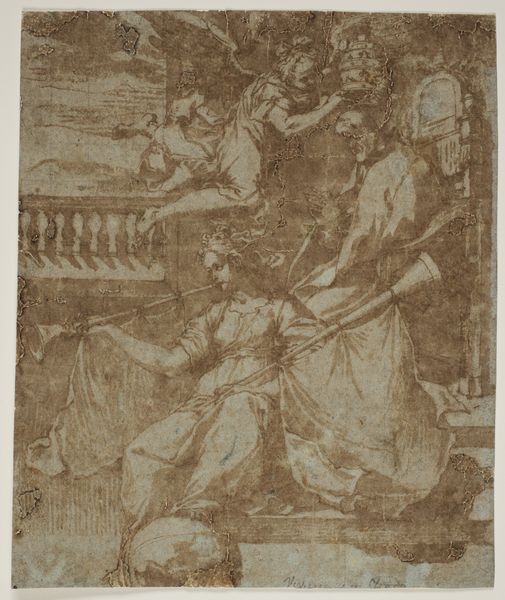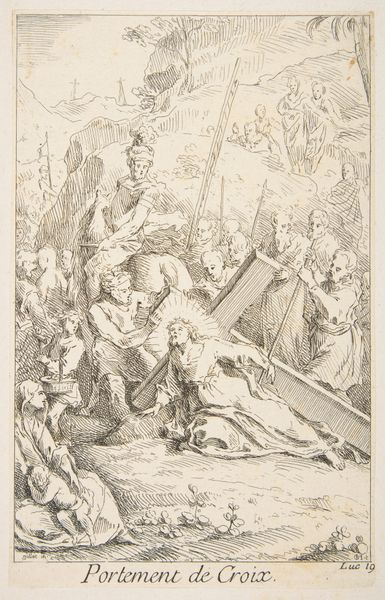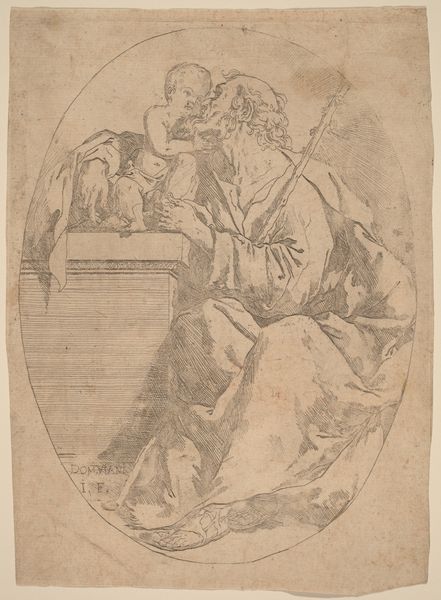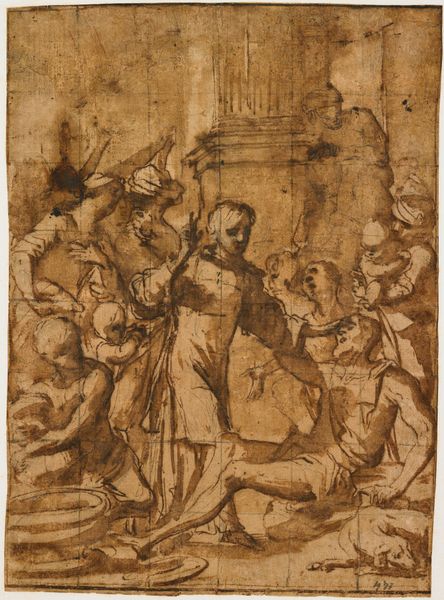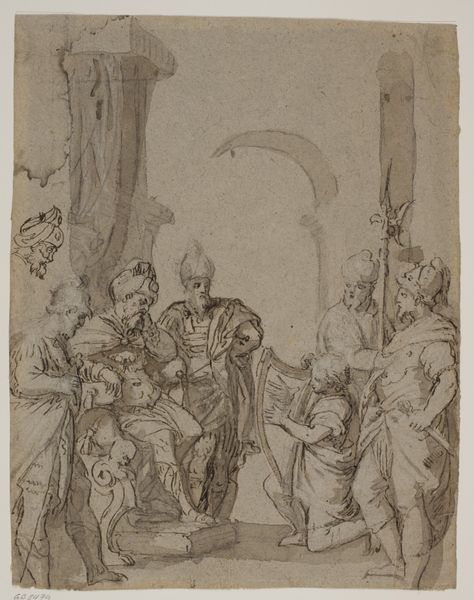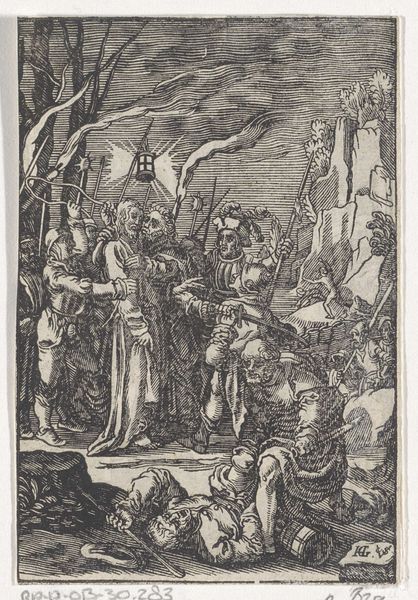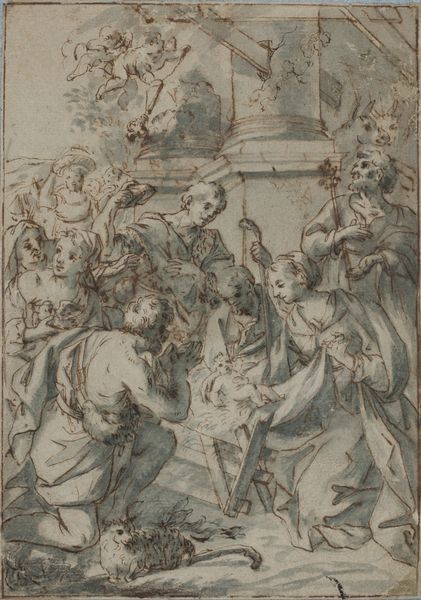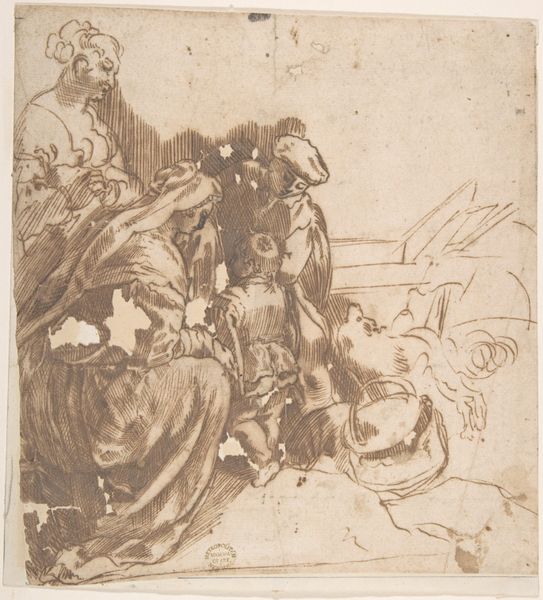
drawing, print, ink
#
portrait
#
drawing
#
medieval
#
narrative-art
#
ink painting
# print
#
figuration
#
11_renaissance
#
ink
#
line
#
history-painting
#
christ
Dimensions: 5-7/8 x 5 in. (14.9 x 12.7 cm)
Copyright: Public Domain
Editor: Here we have "Christ's Entry into Jerusalem," an ink drawing from sometime between 1500 and 1600 by an anonymous artist. I'm struck by the swirling lines; it creates a sense of movement and energy. What do you see in the composition of this piece? Curator: The dynamic mark-making is indeed compelling. I see a deliberate emphasis on line quality. Notice how the artist uses hatching and cross-hatching not only to define form but also to create tonal variations, manipulating light and shadow. The formal relationships of these lines - their direction, density, and weight - dictate the rhythm of the composition. Have you considered the architecture portrayed and the importance of it in the context of the central figures? Editor: I hadn’t considered that. So, you are focusing on how the lines build up a whole narrative using forms, like the lines of the buildings behind and in contrast to the curved lines of the figures... It's not just the representation of a story, but the story of the lines. Curator: Precisely. The architecture isn’t just backdrop. How do you interpret its formal properties—the straight edges against the curves of the figures? Are the linear qualities simply illustrative, or do they activate formal strategies that determine how we look? The radiating lines above, are those simple beams of light? Or an abstract shape? Editor: That’s fascinating! I see now how even though it is representative, looking at its pure form changes my understanding. Curator: Understanding the visual components, independent of their representational purpose, is crucial to understanding visuality and aesthetics. Editor: So, from this approach, a Renaissance drawing becomes not just an image but a network of decisions around form. Curator: Exactly. Paying close attention to such "internal" relationships of form can greatly expand and clarify one's critical apprehension. Thank you, that perspective enhances my understanding of how formal qualities are paramount.
Comments
No comments
Be the first to comment and join the conversation on the ultimate creative platform.

